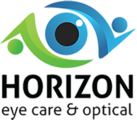
What Vision Issues Are Common In Kids And How We Can Help?
Published:
Your child’s vision is important for their development. When they suffer from vision problems, chances are they suffer academically and socially. It is essential to have their eyes checked as early as at the age of 2.
Eye disorders can be either refractive or non-refractive. Refractive eye disorders occur when the eyes cannot focus light coming in, leading to blurred vision. Non-refractive conditions are a result of eye diseases.
The best way to know if your child has any vision problem is to understand the common eye problem in children. Here are some of the common eye diseases in children.
Refractive Eye Diseases
Some of the common refractive eye disorders you are likely to find in children include:
- Nearsightedness: Nearsightedness is also known as myopia. If your child has myopia, it means that they can only see things that are close to their eyes. They strain to see distant objects, and sometimes they can hardly see them. Some of the myopia signs include squinting eyes when looking at distant objects and reading and watching television at a close view.
- Hyperopia: Hyperopia is the opposite of nearsightedness. It is also known as farsightedness. It means that your child can see distant objects, but they may have trouble seeing or reading things close to their eyes. Farsightedness occurs when the cornea cannot bend enough to direct light in the correct direction. Some of the symptoms include fatigue and concentration difficulties.
- Astigmatism: Astigmatism is a result of having an abnormal cornea curvature. This means that your child’s cornea may have an irregular shape. When your child has this condition, they may experience persistent headaches. Astigmatism progresses with time, and that means your child’s eyes may get worse as they grow. It is thus essential to visit a pediatric optometrist at least once a year.
Non-Refractive Eye Diseases
Some of the common non-refractive eye diseases in children include:
- Glaucoma: Glaucoma is an eye disease that occurs as a result of excessive eye pressure. If left untreated, it can lead to permanent vision loss. It is painless, and that means you may not notice that your child has glaucoma. It is imperative that you take your child for eye checkups. If your child gets glaucoma at an early age, as young as three years, it gets referred to as congenital glaucoma.
- Cataract: A cataract is a clouding over the eye lenses. When the eye lens becomes clouded, light rays cannot penetrate through, causing blurred vision. Cataracts can either affect one eye or both eyes. Though cataracts can affect children, they are not so common in small children.
For any information on your child’s vision, do not hesitate to contact Horizon Eye Care & Optical in Sugar Land, Texas. We have optometrists specialized in eye problems, and they can diagnose and treat any eye condition in your child. We have had experience dealing with children for so many years, and that allows us to give them the best patient experience. Contact us today at (281) 313-2020 to schedule an appointment.
